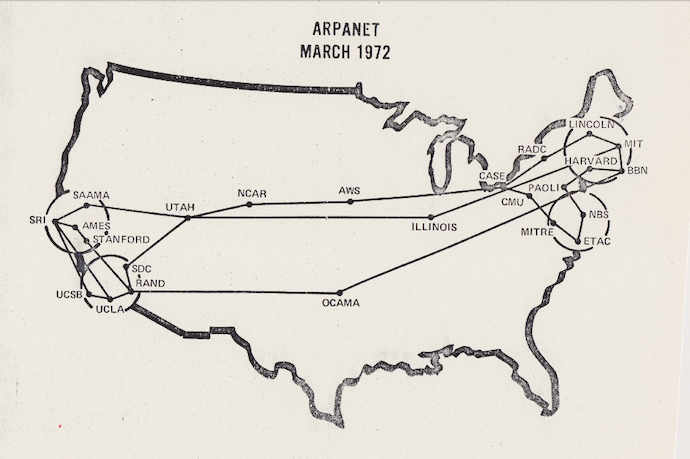The Internet didn’t appear out of nowhere. So, how did it come to be?
Like everything (even you), there were earlier versions that led up to what we have today. Ask your parents or grandparents if they recall the dial-up connection to the internet and the awful noise it made. But even that wasn’t the beginning. It was ARPANET that introduced some of the technology we still use today.
ARPANET was developed in the late 60s, before any sort of technology like it existed. Two groups of people were very interested in this kind of tech; the US military (who liked the idea of a computer network without a “core” that could be knocked offline by the enemy) and academics (who liked the idea of sharing information long distance).
Old Tech to New Net
The first model of ARPANET used a lot of technology you’ll find familiar, now, 50 years later: for example, sending packets to other PCs, and a modem-based system that could send these packets out. We still use both of those today.
The military and academics pushed to get a working model out, and on Oct. 29, 1969, they ran the first-ever test and sent the first message using this new tech. All they had to do was send the word ‘LOGIN’ from one PC to another. But as soon as they hit the G key, the computer crashed. (Some things never change.) Despite this, they fixed the bug and got everything working smoothly.
What you could do on ARPANET was limited to logging into another PC on the network remotely, sending a file to another computer, or sending data to a printer hooked up to the network. If it sounds boring, remember, this kind of technology didn’t exist before ARPANET. The idea of sending a file through a network to anywhere else on the planet was huge, and many military and academic organizations lined up to be put onto ARPANET. By 1976, 63 terminals owned by organizations like MIT and NASA, were connected to ARPANET.
Science Non-Fiction
The excitement around ARPANET combined with the greatest minds in the military and academy spheres, led to a lot of innovation. 1971 saw the first ever email sent, followed quickly by the world’s first digital mailing list. It was called SF-LOVERS, and was used by science-fiction fans to share their love for the medium.
The invention of TCP/IP in 1977 allowed two separate networks to communicate with one another. We still use TCP/IP to keep the internet running today, and the tech was so good that it allowed ARPANET to be split into two different networks that could still talk to one another: MILNET for military use, and a non-military version of ARPANET. Communicating between these two networks was called ‘internetworking’, or ‘internet’ for short.
But all this innovation meant that competitors also sprung up and by 1989, ARPANET was decommissioned. Just two years later, the World Wide Web would come to fruition and bring about the internet we use today.
So, while we’re not using the same network cables that ARPANET used all those years ago, a lot of the technologies invented for it still live on and come into play every time you connect to the internet. Who says old tech is useless?
Learn More
What is ARPANET
https://www.britannica.com/topic/ARPANET/A-packet-of-data
Definition of ARPANET
https://www.techtarget.com/searchnetworking/definition/ARPANET
What is ARPANET?
https://nordvpn.com/blog/what-is-arpanet/
15 Fantastic Firsts on the Internet
https://www.pingdom.com/blog/15-fantastic-firsts-on-the-internet/
How the Internet Was Born
https://theconversation.com/how-the-internet-was-born-from-the-arpanet-to-the-internet-68072
What is ARPANET?
https://www.spiceworks.com/tech/networking/articles/what-is-arpanet/

